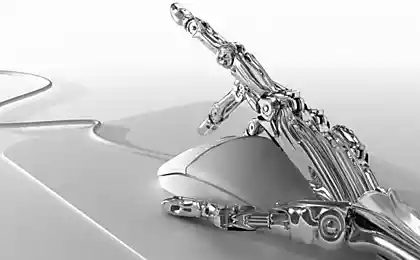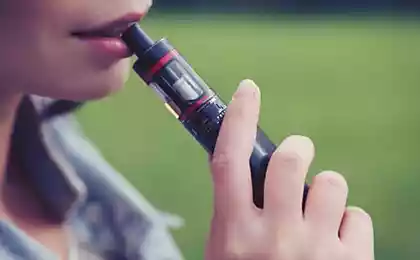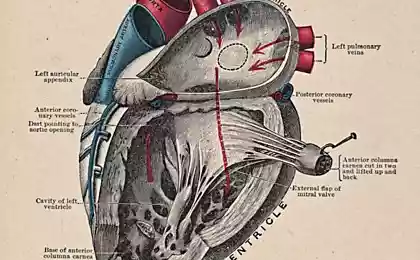1039
Electronic skin
Today, all over the world are being developed humanoid robots, bionic prostheses, artificial organs. Perhaps, at the moment, scientists and engineers have advanced the furthest is in prosthetics. Unfortunately, the appearance of these masterpieces Bioengineering still leaves much to be desired in terms indistinguishable from living flesh. Furthermore, for the successful use of these prostheses requires visual inspection as artificial limb lacks tactile sensations. And to deal with all these problems, scientists are developing artificial electronic skin. What successes they have achieved?
Artificial tactile sensitivity in humans and machines yet remains the lot of science fiction films and books. But there is every reason to believe that will be available soon and the first engineering samples of these existing systems. And besides prosthetics and equipping robots, artificial leather technology promises to find application in the field of portable gadgets.
By themselves, the robots no longer surprise anyone but the old ladies of the backwoods. And the more mechanical "beings" will penetrate into our daily lives - and it seems inevitable - the more important it will become to give them the opportunity to "feel the hide." This will be the minimum required for the safety of their own functioning, in addition to the shape of objects, you need to determine lubricity, texture and temperature of the surface, otherwise the robot can drop the item itself or fall. Sensing properties of the object, the robot will be able to accurately calculate the necessary and sufficient holding force.
This is the use of a distributed network of sensors to accurately measure small changes in pressure draws the attention of producers and enthusiasts of wearable gadgets and "smart" clothing. Artificial leather electronic (E-skin) may also be useful in creating wearable sensors monitoring physical condition and even find use in minimally invasive surgery.
The softness, flexibility and elasticity h4> As already mentioned, a flexible synthetic leather is particularly relevant in the field of prosthetics. Modern high-tech prostheses using myoelectric interfaces receive signals directly from human muscle tissue and using complex algorithms convert them into servo movement. But despite the efforts of the designers give artificial prostheses most natural look, their artificiality is very noticeable. And important role in this perception plays hardness of the outer shell prostheses. She does not bends and stretches like real leather, let alone the touch and can not speak.
The real breakthrough in the field of artificial skin will happen when it will be able to give the mechanical properties of human skin. This will accurately interact with objects and save people with dentures from the lion's share of discomfort and inconvenience.
However, this is, and one of the main difficulties. After all, to follow the contours of the skin exactly the objects contained therein electronics must also be flexible. Unfortunately, almost all modern microelements base can not boast of such property. Although the solution to this problem is directed considerable effort on the part of developers. For example, the first attempts to create artificial skin constituted printed on a flexible substrate with the conductive circuit soldered to them by standard microelectronic components and sensors. Such solutions have been extremely awkward as finished products is a kind of surface, beneath which clearly palpable solid "islands" of electronic components that are connected to each other the traditional brazing metal.
However, this approach was the basis for the project ROBOSKIN. Outer cover was a Semi-rigid material with embedded sensors and electronics. Of course, it was far from the concept of "skin", but this coating ensures minimal tactile features and is well suited for use on large surfaces of complex shape. This prototype artificial skin even been tested on different robots, including iCub .
Another interesting approach to the creation of e-skin is the use of органических thin-film semiconductor transistors . This technology was developed by scientists at Stanford University and Tokyo. Due to the peculiarities of its molecular structure, organic semiconductors initially have the flexibility that is their most important asset. On the other hand, the speed and stability of the organic components are low due to low electrical conductivity.
But for an effective artificial skin is required response speed is not more than one millisecond, the robot could react quickly enough. And according to this indicator is best suited highly mobile materials such as single crystal silicon.
However, the use of silicon brings us to the problem of flexibility. One approach allows to solve it by using термопереносной Print . For this silicon nanowires deposited by heating on a flexible plastic substrate. It is a flexible material called polyimide (polymide). Such a substrate with applied conductive circuits of silicon nanowire then equipped with TFT and sensors. This technology is now being actively developed at the University of Glasgow (note, this is still the Scottish scientists!).
Another promising material was also недавно developed in the walls of the Israel Institute of Technology. A substrate of polyethylene coated sensors, which are single-layer portions of the gold particles with a diameter of 5-8 nm. They, like petals, surrounded by ligands , performs the role of conductor connectors. These sensors are able to measure pressure in the range of tens of milligrams to tens of grams.
Now major efforts aimed at achieving adequate flexibility and strength cover, but other than that, is an issue of tactile "natural." In addition, synthetic leather, in fact, is an electrical appliance, gadget. And its energy efficiency will also require attention of developers. Of course, it's not smart with their low battery life, but still reminisce about recharging your skin need as little as possible.
In general, the current state of affairs with the creation of artificial skin gives us hope that in the coming years it will reach the level of a commercial product. And who knows, maybe in 20 years you're shaking someone's hand, then was surprised to hear that it happens to be a prosthesis.
Source: habrahabr.ru/company/asus/blog/233347/
Martian cobble left a mark, visible from orbit
Nokia and QMUL introduced charging system based on sound waves























